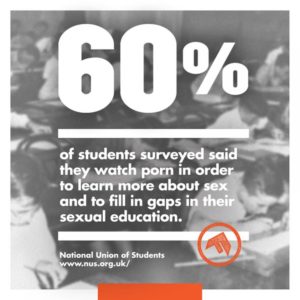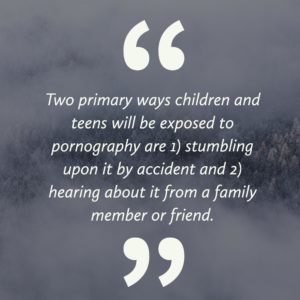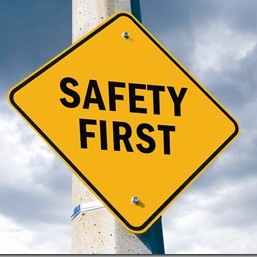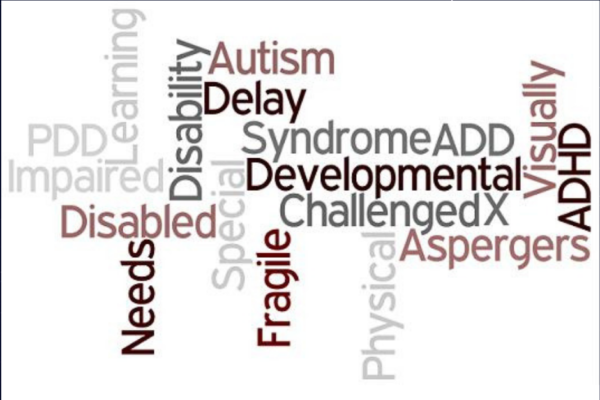The horrifying truth is this:
- Most teens have been exposed to porn.
- They can access it at will.
- Teens think porn is the ‘real’ sex-education they haven’t been taught.
Yes, they suspect porn is the real sex-ed, the stuff we’re not telling them. That it’s the up-close camera angle which is going to show them what to do, that they won’t learn anywhere else. Because they want to show up in a sexual relationship already knowing how to do it all, not as a novice, learning from their partner.
They’re so focused on researching what to do that how they’re feeling, and how their partner is feeling, takes a back seat. Porn doesn’t help that – communication and consent aren’t modeled at all. Quite the opposite.
How do we help them understand? Here are the four things you need to know and warn your kids about:
Problem #1: Addiction

All porn is entertainment, designed to catch our attention and give us a thrill. That thrill, on a physiological level, is a release of neurotransmitters in the brain. The first time, you get a huge release of dopamine which encourages you to go back for more. As time goes on, the brain adjusts and releases less dopamine, so you experience less of a thrill – you’ve acclimated. To get the thrill again, there has to be something novel, something extreme – you need more. The same thing happens with drugs, gambling, and video gaming, which is why they can all lead to addiction.
Porn producers are happy to supply us with more: more partners, more exaggerated fantasies, more violence, more degradation, more sex toys and fetishes, more close ups. In fact, it’s a bit of an arms race for more and more extreme videos, animations, and podcasts.
Porn addiction has probably existed since the start of the industry, but when access was more limited, fewer people were affected. With such ubiquitous internet access today, porn addiction has become much more common. Fight the New Drug is a nonprofit specifically focused on educating the public about porn addiction, and they also provide services for addicts. They have many great articles: check out Porn Leaves You Lonely and this letter from a teen addict.
A major study at the University of Sydney in 2012 showed that for men who were frequent users of pornography, 43% were first exposed to pornography between the ages of 11 and 13. Yes, you read that right. We need to be talking to preteens about porn, our 10 year-olds, so that we get to them before the industry does.
Problem #2: Disincentive To Date & Relate

Being addicted to anything is a problem, but the ramifications of watching porn goes deeper for teens. It’s not just a way to orgasm quickly and relieve stress (so please teach them lots of other stress relief strategies!).
As they move through puberty, their brains are being rewired to focus on social relationships and sexuality. There’s a good reason for those two to go hand in hand: Everyone has the curiosity and drive to begin sexual experimentation, but that can only happen if you can build a relationship with a partner. Navigating another person’s wants and needs is no small task! The sexual drive motivates teens to learn the social skills they’ll need for partnership. Those communication and relationship skills are actually needed all the time, in our families, in the workplace, and especially in intimate relationships.
Puberty is the time when we learn those skills – unless the sexual drive is disconnected from the need to build relationships. If a young person turns to porn instead of their peers, there’s less of a need to develop relationship skills. Do you remember how confusing it was to figure out what your first boyfriend or girlfriend wanted and needed from you? Turning to the internet is so much easier. No guessing. No awkward moments. No rejection. All the sex you want.
Our least socially savvy kids are the most at risk. They are the ones who need the most practice at relationship skills, and it’s a tough mountain to climb. It’s so much easier for them to get their needs met through porn and chatting online. If an adult, who already has learned how to navigate relationships, becomes addicted to porn, they simply have the addiction. A teen, however, has the addiction and is losing out on valuable relationship practice.
Problem #3: Skewed norms
Even if your teen has good social skills and is practicing relationship skills with a steady stream of partners, viewing porn is still a problem, because it skews their sense of normal adult sexuality.
What they are learning from porn is a male-centric, self-centered, and degrading version of human sexuality. Take a look at Gail Dine’s TED talk below to get a sense of what kids see when they access porn – it’s not what we saw in our youth! Those days are over. Now everything online is hard core and fetishized.
It’s easy for kids to think that what they see commonly in porn is “normal,” especially if those sex acts are what all of their peers are seeing, talking about, and experimenting with. From their view, not watching porn, not wanting to experiment in that way, not having their bodies perform as the porn star’s do, and not looking like those performers is what’s abnormal.
Many teens are surprised to discover that they or their partners don’t actually enjoy those sex acts. Rather than recognizing that the porn was fake, teens may wonder what’s wrong with them.
That’s just one of the reasons porn consumers are likely to be dissatisfied with their partner or sexual experiences. A girl whose partner has no idea what breasts look like won’t judge hers, but a partner who has watched thousands of porn videos has a skewed standard of how her body “should” be. Or how a penis should look or perform. Or how much hair one “should” have.
Not only do they have skewed norms for their partners, they have skewed norms for themselves. The result is poor body image and an emphasis on performance instead of mutual pleasure.
Problem #4: Imprinting
Ok, so maybe they have the wrong ideas, but with experience, they’ll learn what’s real, right? Unfortunately, it goes a bit deeper than that.
We now have evidence that our first sexual experiences are imprinted on our brains. That means that our first experiences are wiring our brain’s arousal pathways. If our kids’ first sexual experiences are masturbating to hard-core porn, that is wiring their brains! That is what they’ll find sexy and arousing, not the sweet intimacy we hope they’ll experience with their first partner.
One of my clients had a 15 year old daughter who was regularly accessing BDSM porn. (Before you judge, know that this upper middle class family had homeschooled their kids for a time and had severely limited the kids’ access to the internet. This came out of the blue for the parents, who thought they had done everything right!) Mom came to learn that daughter wrote and fantasized about degrading acts, to the point where the girl demanded her boyfriend call her degrading names and was unsatisfied with his attempts. We worked to make porn a topic that the parents and daughter could talk about together, so that the parents could begin to counter the messaging she’d absorbed from porn.
It’s possible that this teen would have found her own way to BDSM as an adult, but it’s much more likely that the porn shaped her sexual tastes. That’s imprinting. That attraction to BDSM is here to stay.
So…what do you do?
Support the movement to regulate the porn industry and make this material less accessible to kids. Limit the porn anyway you can, but don’t rely on the parental controls (most kids access porn for the first time in their own homes). We have to talk to our kids about pornography, and starting earlier is better. Normalize these conversations. Explain these four traps.
I get it that these are really hard conversations to have, but they’re also really really important.
If you’d like some help, I’m only an email away.
In support of you,
Anya
P.S. I’ve interviewed several experts on cybersexuality to give you their recommendations for how we can protect and guide our kids. Get access to those videos and more when you become a member.












1 Comment. Leave new
Thank you Anya! Most people don’t want to go there, but it’s so important that we do.